The hooded vulture, Necrosyrtes monachus, is one of the smallest of the Old World vultures. The species gets its common name from the cream-colored hood, formed from a patch of downy feathers, along the back of its neck to the crown of its head.
If you have ever been on a safari, you will know that a group of vultures flying up ahead is a good sign that predators are in the area and have possibly made a kill.
While the hooded vulture is often mistaken for the lappet-faced vulture, our hooded friend is only half the size. Let’s dive into the scavenger’s appearance and exciting facts below.
Appearance of the Necrosyrtes Monachus
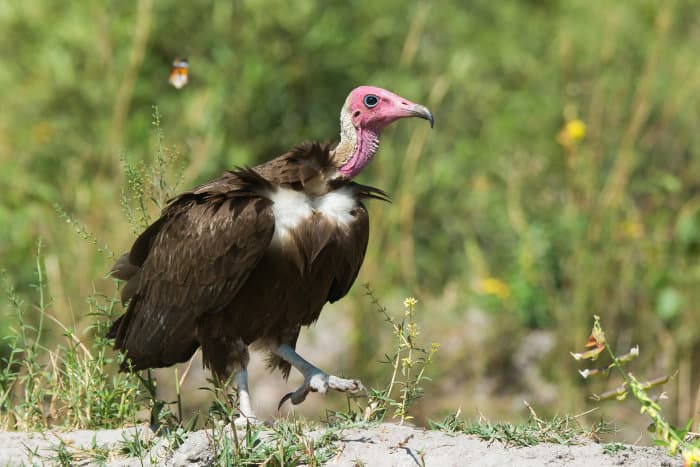
The small vulture is scruffy-looking and has a rather short, rounded tail. The male and female vultures appear similar, while females have longer eyelashes than males. Juveniles are similar in appearance to adults, only darker and plainer in color with a purple sheen.
The vulture’s face is usually pinkish-white in color, though it can flush red when agitated. It has dark brown plumage with a feathered nape and hind-neck. The hooded vulture’s long thin black bill leads into its bare face, crown, and foreneck.
Hooded Vulture’s Diet
Soaring above savannah and human settlements, the hooded vulture typically scavenges on carcasses from wildlife or domesticated animals. They also feed on grasshoppers, grubs, and locusts and congregate during the seasonal emergence of insects.
The hooded vulture feeds at low tide on mussels, lobsters, mollusks, and dead fish along the coast. When limited food is available, the species can go without food for several days by not excreting and in turn slowing down its metabolism.
Hooded Vulture Size
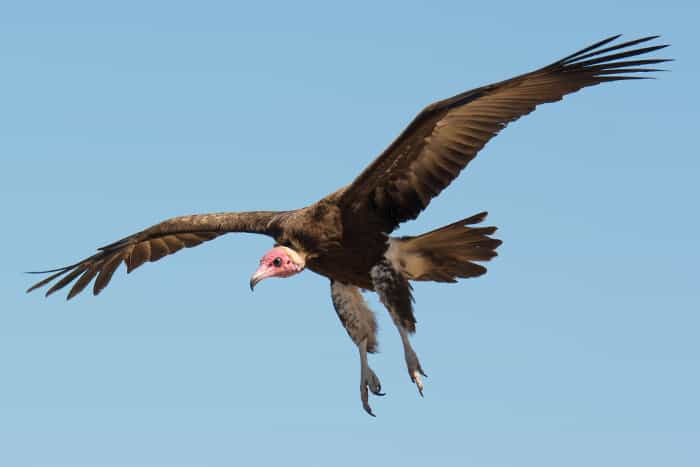
Female hooded vultures grow to between 61 cm and 66 cm while males reach between 56 cm and 61 cm. The female hooded vulture is slightly larger and typically weighs more than males, averaging 2 kg.
The hooded vulture’s wingspan is on average 152 cm.
Where Do Hooded Vultures Live?
The hooded vulture is native to sub-Saharan Africa. It has a widespread distribution with populations in southern, east, and west Africa. The species can be spotted during game drives in over 20 African countries, including Kenya, Senegal, and South Africa.
The region with the highest concentration of hooded vultures is in the west of The Gambia.
Hooded Vulture Habitat

The species is most commonly found near human settlements north of the equator. Its habitat consists of open grassland, forest edge, wooded savanna, desert, and coastline.
The hooded vulture tends to give way to larger vulture species. It prefers areas where it doesn’t have to compete with populations of the larger Gyps vultures at a carcass.
This African vulture is not easily deterred by human activity. It is able to survive at heights of 4000 m above sea level, although most sightings occur below 1800 m.
How Many Hooded Vultures Are There?
The global hooded vulture population has been on a rapid decline. Data and observations from 2011 indicate an estimate of 197 000 individuals globally.
Hooded Vulture Behaviour
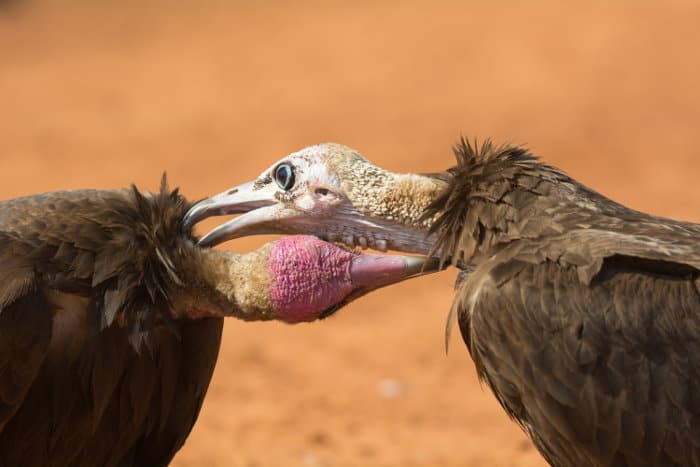
Usually silent, the hooded vulture communicates by making squealing calls from the nest or carcass. It also releases a shrill whistle during intercourse.
The birds often move in flocks of between 50 to 250 individuals. Forming loose colonies which are unlikely to move more than 200 km from a sedentary area. They follow other scavengers such as African wild dogs and hyenas in search of food.
Mating and breeding
The hooded vulture nests in trees, which they build out of sticks lined with green leaves. They prefer trees with foliage near to a water source. Nests are usually located at heights of up to 15 m in the fork of a tree. Breeding pairs return to the same nest the following year.
Breeding takes place in the dry summer season. In West Africa and Kenya, the hooded vulture breeds all year round but especially from November to July.
In northeast Africa, breeding occurs in October to June, while South African residents report breeding taking place between May to December.
Hooded vultures typically lay one egg, white in color with yellow speckles. Incubation of the egg lasts 46-54 days, followed by a fledging period of 80-130 days. Young are still dependent on the parents for 3-4 months after fledging.
Following studies in South Africa, mating pairs of hooded vultures recorded a success rate of 0.5 to 0.67 young per year.
Why Are Hooded Vultures Endangered?
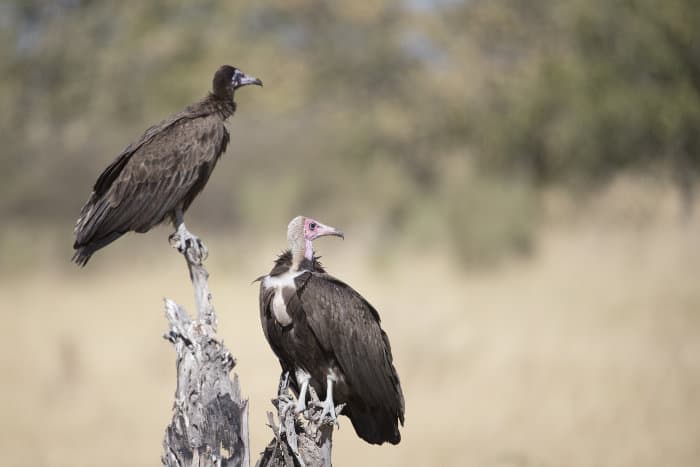
The International Union for Conservation of Nature has rated the hooded vulture population as critically endangered due to its decreasing population.
Threats and conservation
Significant threats to the species include non-targeted poisoning, hunting for traditional medicine and bush meat.
A survey in Nigeria showed that 90% of vulture parts traded as medicine were from the hooded vulture species. The non-targeted poisoning is typically from ingesting carbofuran pesticides meant to poison carnivores at livestock baits.
In addition, the decreasing population is due to the loss of habitat and collision with electrical lines. Senegal’s population has faced a decline in the number of trees for nesting.
Raptors receive protection from the United Nations Convention on the Conservation of Migratory Species of Wild Animals (CMS).
This memorandum serves to understand the conservation of migratory birds of prey in Africa and Eurasia. It recommends governments in countries where the hooded vulture occurs to regulate pesticides and poisons.
Interesting Hooded Vulture Facts
Here are just a few of the fun facts about wild vultures:
- The hooded vulture belongs to the Accipitriformes order of birds of prey.
- It is the only member of the Necrosyrtes genus.
- It is the sister species of the Gyps genus of vulture.
- A Ghanaian University sees an increase of hooded vultures on campus during school terms.
- Despite its unappetizing diet of carrion, vultures are clean birds and bathe frequently.
- Hooded vultures detect dead animals by sight and movements of other scavengers.
- When food is plentiful, hooded vultures gorge themselves until they are too heavy to fly.
Head Off on a Safari to See African Vultures
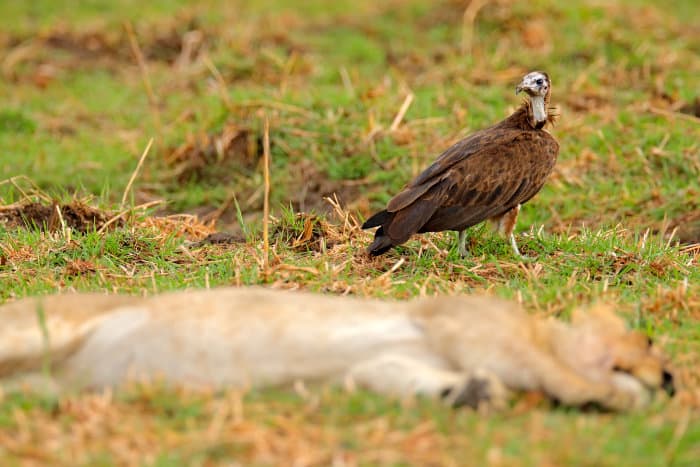
Seeing the hooded vulture circling above is enough to get most visitors on safari excited. This critically endangered species might not be the highlight of your game drive, but it should be on your list of animals to see.
Its pink face, when covered in the remains of carrion, is a humbling reminder of the scarcity of food and the vulture’s ability to survive in harsh conditions.
Find a safari deal to any of the countries listed above to capture striking hooded vulture photos.
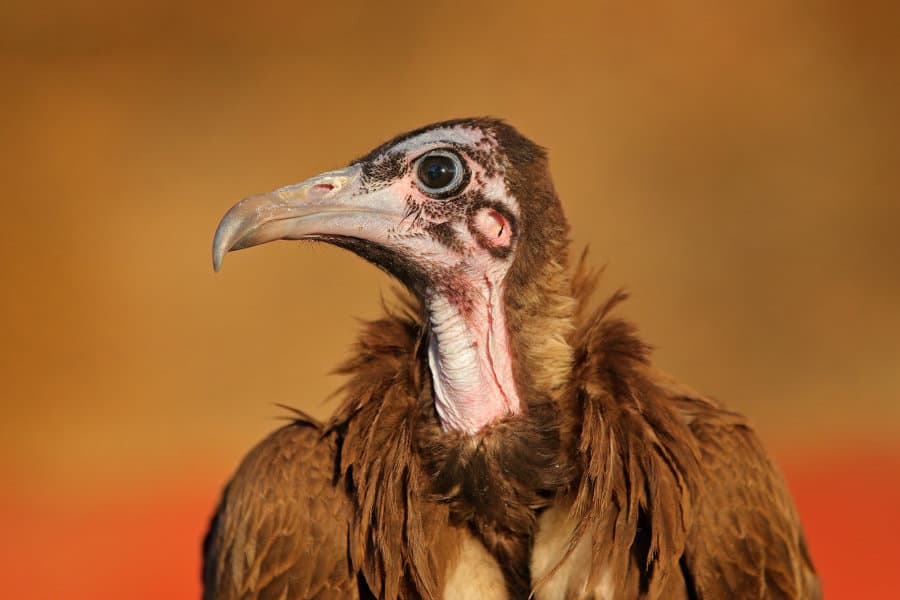
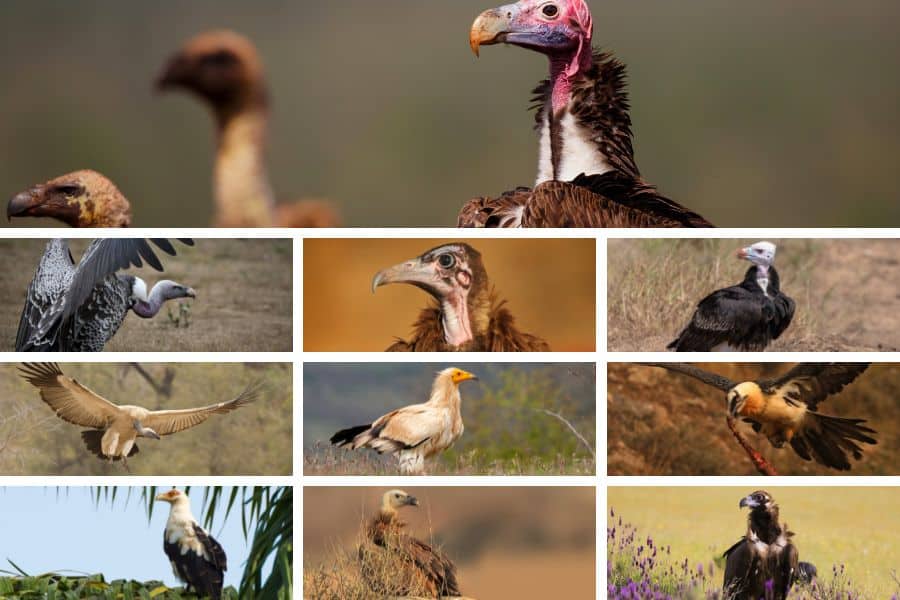
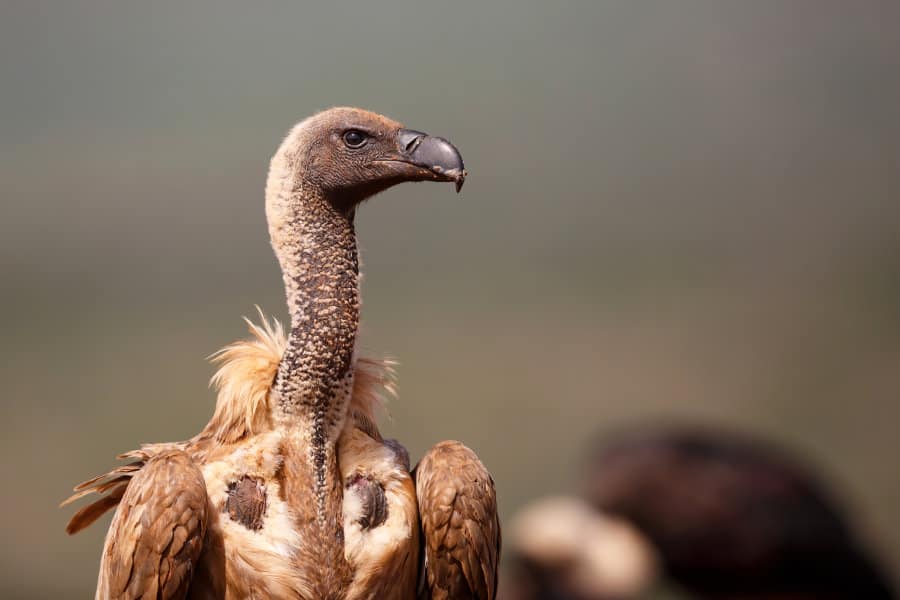
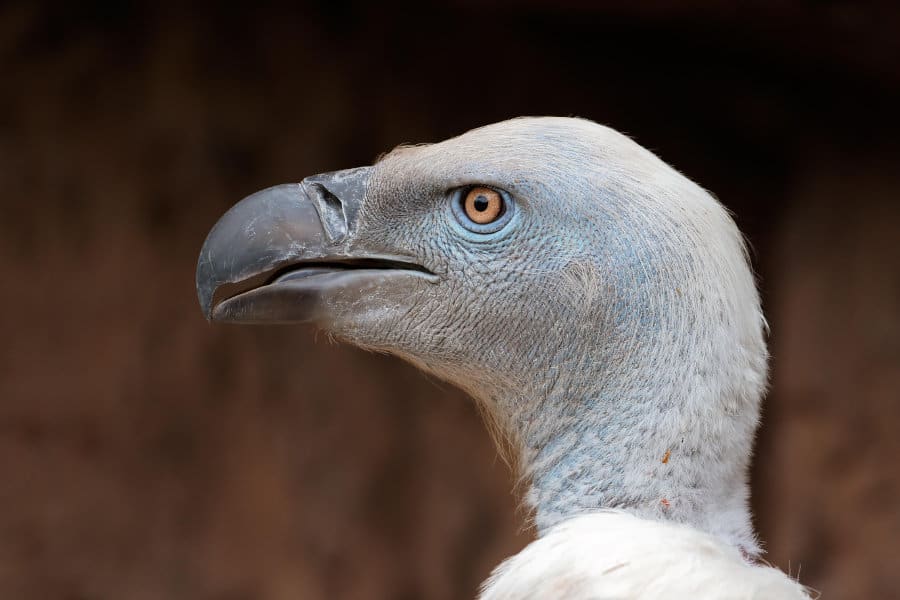
Can you please cite your sources? If you do and I’ve just missed them, I apologize.
Hi Karma,
We create our content from both personal knowledge and outside sources.
While most of our references are usually linked within the body, I’ve just added a couple more in this case.
One particular document you may find useful is called the “Decline of the Hooded Vulture Necrosyrtes monachus across its African range”, by Darcy Ogada and Ralph Buij.
It dates back to 2011 and you can find it in the Journal of African Ornithology.
Hope this helps, cheers!
Michael